Probably one of the most difficult construction tasks for an architect is designing a house for themselves. In each issue of our newsletter, we show you a successful international example of an architect who has taken on this particular challenge.
A tiny footbridge leads from the quay to the floating home of architect couple Eva Bo Geisler and Nikola Antonijevic, which is situated in Copenhagen Harbour. With clear lines and a simple form, the design of the 120 sq.m home makes reference to Japanese modern architecture and also draws inspiration from the maritime world. The interior reveals an almost poetic atmosphere.
by Klaus Hybler with additional translation by Helen Parton
The format and layout of the home are simple, like how a child might draw a house. It is not about trying to look like a boat but instead utilises materials from the industrial harbourside and also from the neighbouring boatyard. The façade and roof are both composed of an undulating aluminum sheets which remind us both of moving water and the aesthetic of traditional North American boat sheds. Inside, the ceilings are raised all the way to the sloped roof.
The large main room is divided into areas by a core space containing a bathroom, technical room and laundry room. There is an entrance next to the core with the kitchen on the opposite side. At one end of the house, we find two small bedrooms, divided by a shelf wall. The bedrooms are separated from the dining area by a wall which features a closet on one side and shelving on the other. At the other end of the house, the living room extends into a serene outdoor deck, separated only by large sliding glass doors. The architects have thus ensured a magnificent view of the harbour all year around. The house is built on two 20-metre-long floating platforms made of concrete and polystyrene placed next to each other.
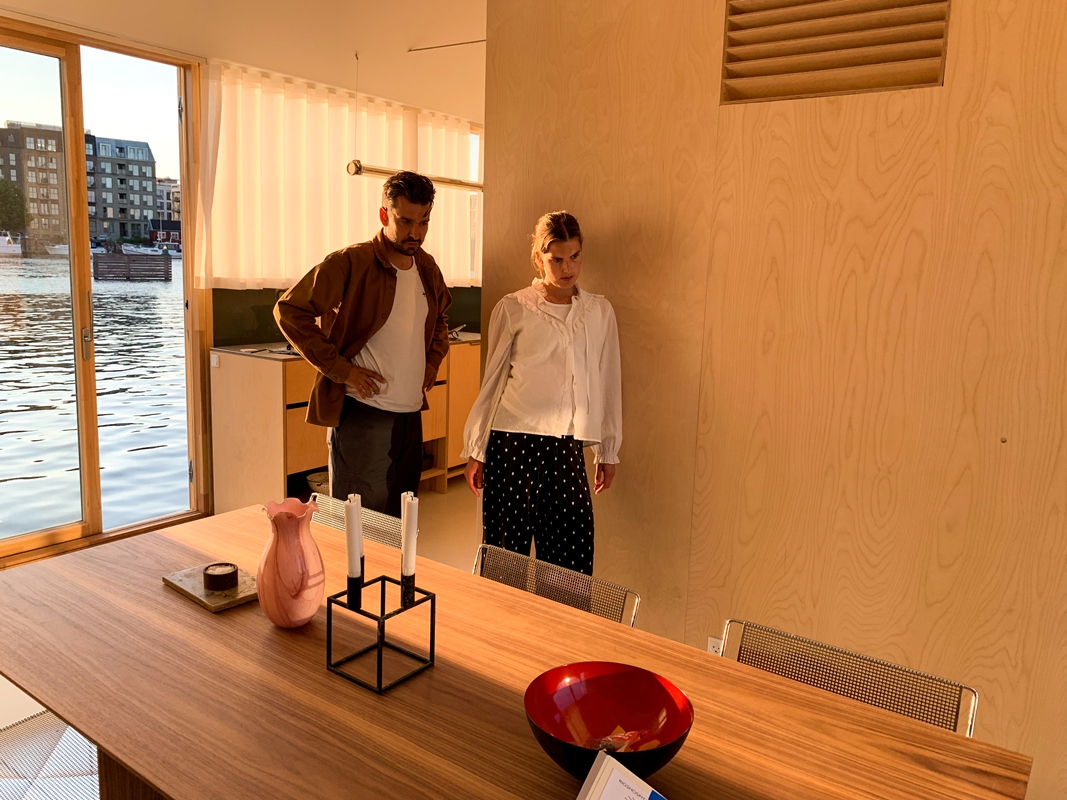
Architect couple Eva Bo Geisler and Nikola Antonijevic moved into their floating home in April 2019.
A family home in a limited space
Eva Bo Geisler, works at Henning Larsen Architects and specialises in interior design and as such rose to the design challenges this project presented. One of them concerned the constraints imposed by the dimensions of the floating platforms. Together with her partner Nikola Antonijevic, who works for design studio Cobe, they developed the project together.
“Most of our references are Japanese modern architecture like Nishinoyama House by Kazuyo Sejima. The design came together as we came up with our solution to overcome the constraints of the dimensions of the floating platforms. From the very beginning, we worked with the concept of using elements such as wood, aluminium and stainless steel: pure and light materials, with a contrast between the raw exterior and the warmth inside,” said Eva Bo Geisler.
“We quickly found a direction and a mutual understanding where the simple form, the light and the gift of water surrounding us play a substantial role. Everything is thought through as a whole.”
"It is as if the house changes character according to the season.”
Eva Bo Geisler
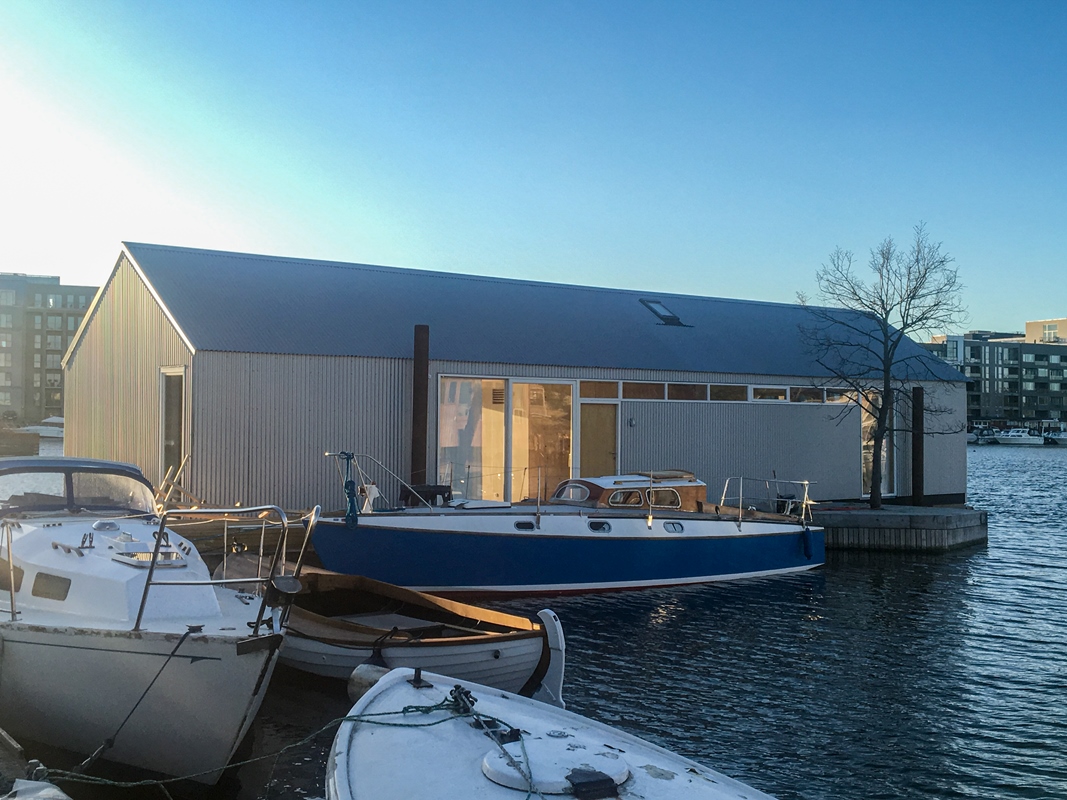
The house is built in lightweight wood with a lightweight façade and roof cladding.
Building on water
The architect couple had to carefully consider the weight of the construction on water, a different task from a regular land-based building. The house is built in lightweight wood with lightweight façade and roof cladding. The PU rubber floor, which runs through the entire house, is efficient and durable, even for wet rooms such as the bathroom. Details such as the pull rods in the ceiling, the kitchen table top and all fixtures are in stainless steel, a nod to this project’s marine environment.
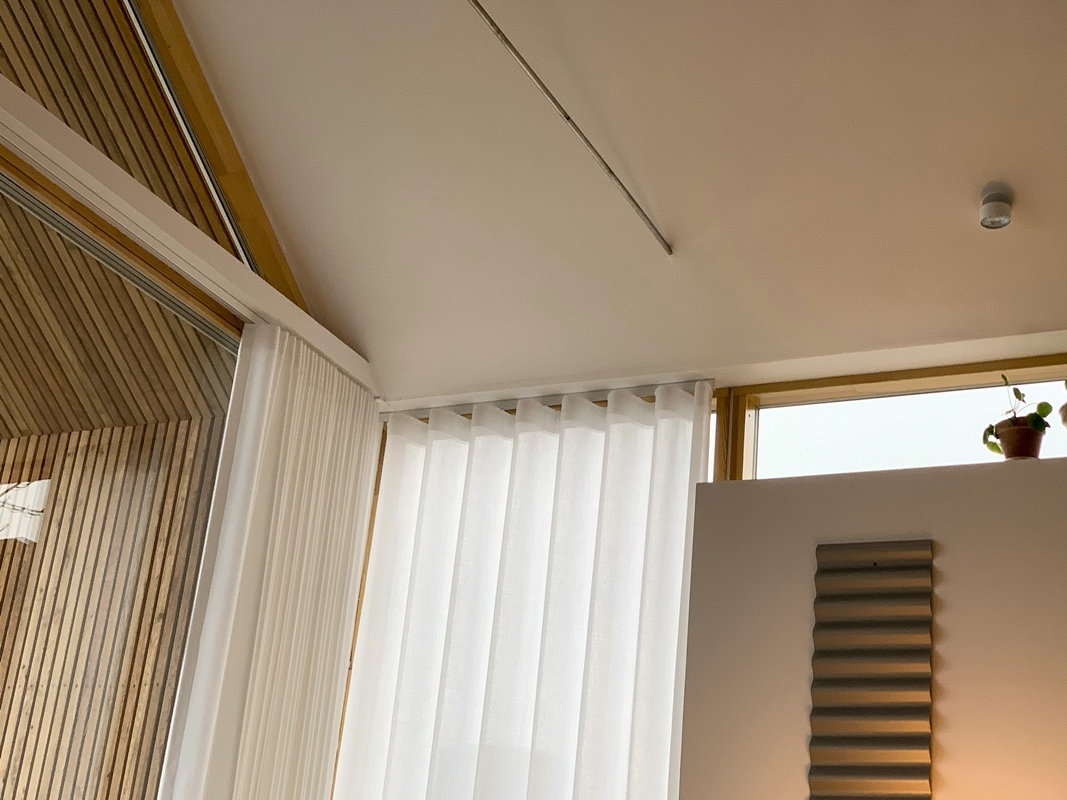
Further details of the interior.
“Wherever possible, we wanted to use honest and very few materials. Walls, cabinets and the kitchen are made in birch veneer and bring warmth to the interior. The outer wall is painted white and the whole interior is simply birch veneer with a matt UV lacquer,” said Eva Bo Geisler.
Building in lightweight materials of this kind can cause overheating in the summer time, but despite the house losing some thermal mass, the risk of overheating comes mainly from the water reflecting on the glass surfaces.
“I think I would have made fewer glass areas when building on water where the light is very strong. But at the same time the light is also what really makes the architecture and atmosphere of the house so unique to us,” said Eva Bo Geisler.
“I think you can always think of something you would have done differently. But in terms of the overall design, I’m very happy with the result."
Eva Bo Geisler
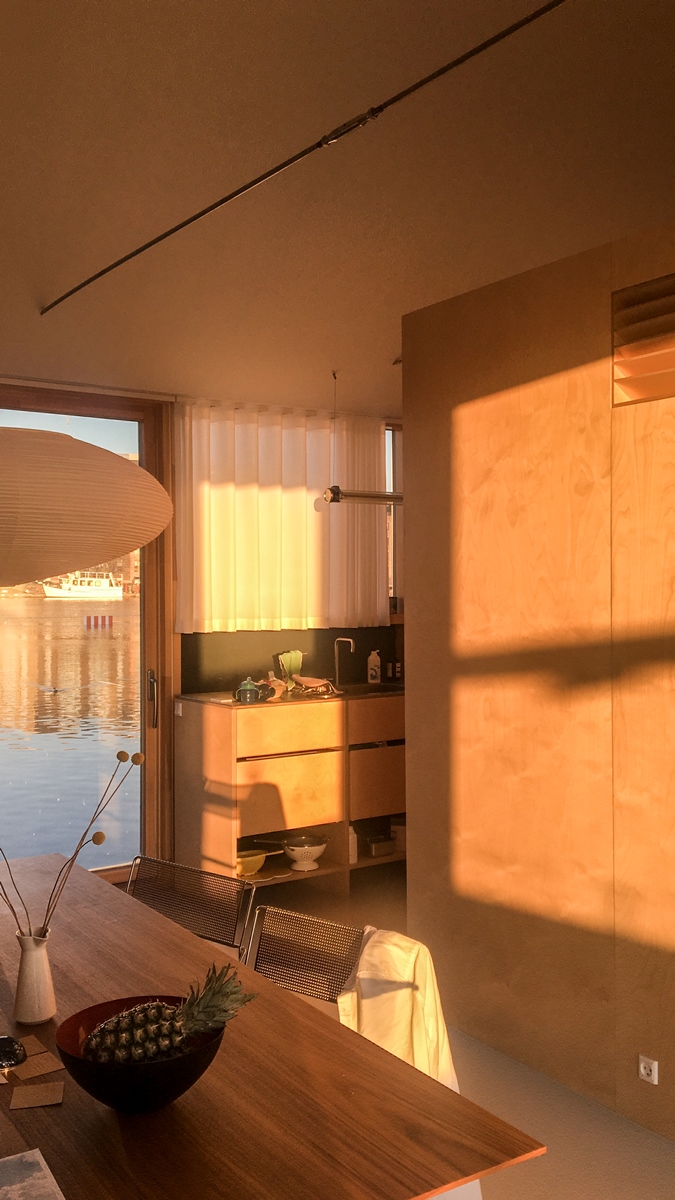
The light creates an almost poetic atmosphere.
Integrating the walls in the interior
A key aim throughout the project was to integrate the shelves and cabinets so they function as both the walls of the house as well as storage space. while being a natural part of the design. Pocket doors create an open floor-plan with multi-functionality in mind.
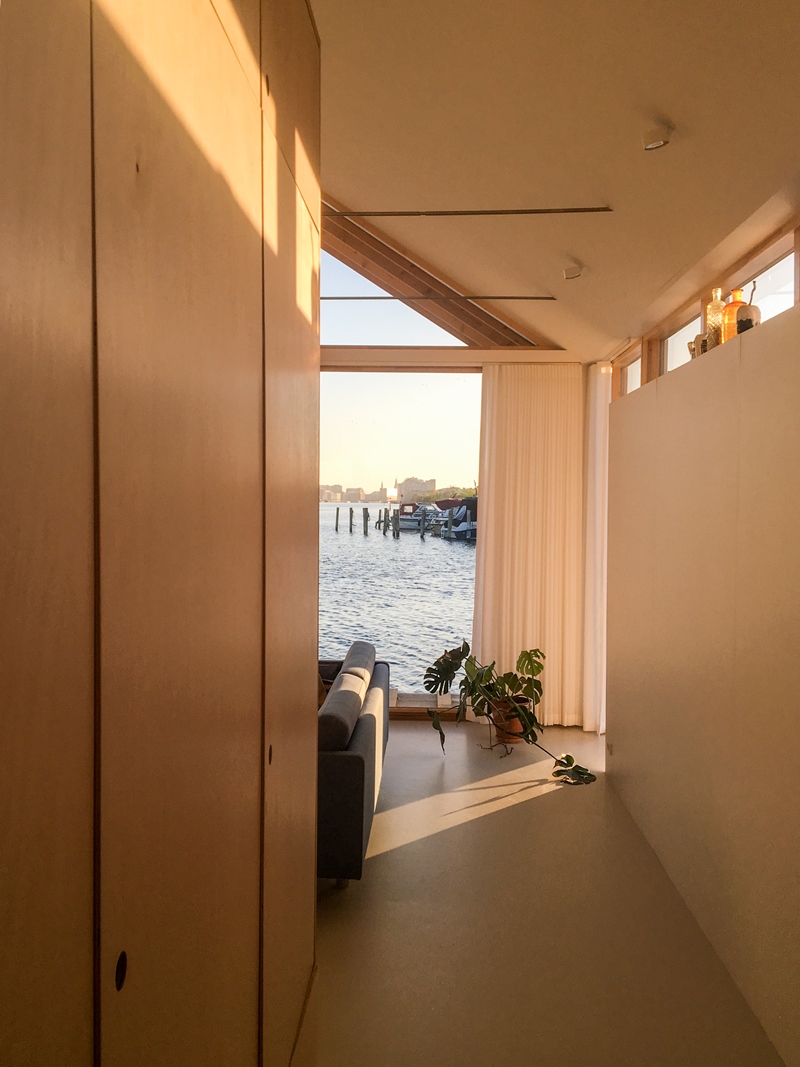
Shelves and cabinets function both as the walls of the house as storage space.
© all pictures: Eva Bo Geisler